Ramon Lopez de Mantaras
A method for the online construction of the set of states of a Markov Decision Process using Answer Set Programming
Jun 05, 2017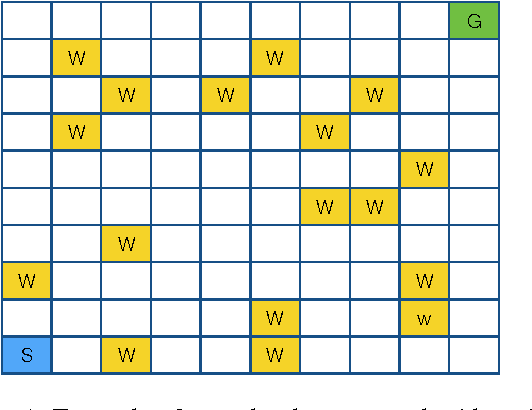
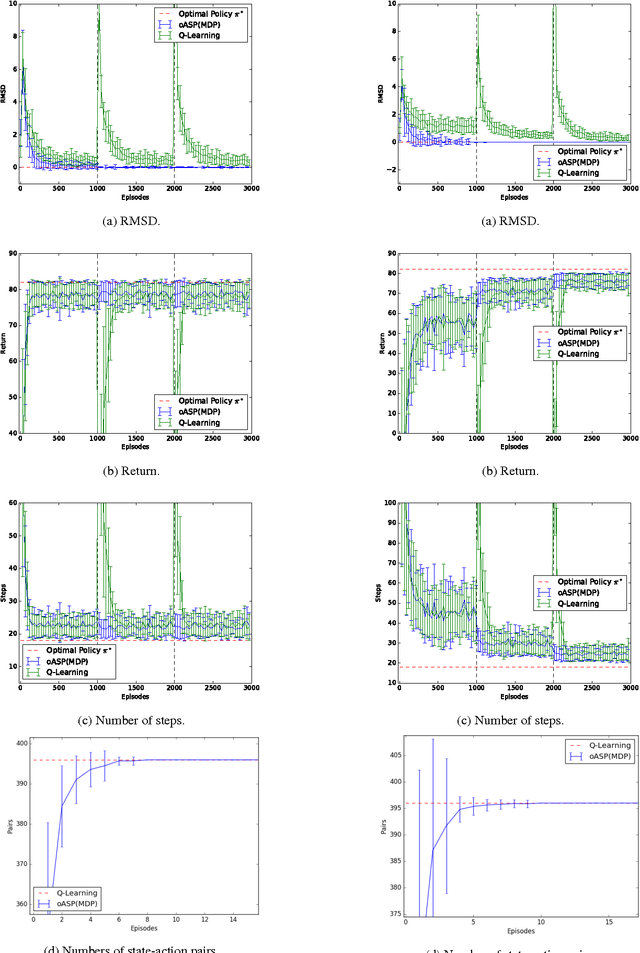
Abstract:Non-stationary domains, that change in unpredicted ways, are a challenge for agents searching for optimal policies in sequential decision-making problems. This paper presents a combination of Markov Decision Processes (MDP) with Answer Set Programming (ASP), named {\em Online ASP for MDP} (oASP(MDP)), which is a method capable of constructing the set of domain states while the agent interacts with a changing environment. oASP(MDP) updates previously obtained policies, learnt by means of Reinforcement Learning (RL), using rules that represent the domain changes observed by the agent. These rules represent a set of domain constraints that are processed as ASP programs reducing the search space. Results show that oASP(MDP) is capable of finding solutions for problems in non-stationary domains without interfering with the action-value function approximation process.
Answer Set Programming for Non-Stationary Markov Decision Processes
May 03, 2017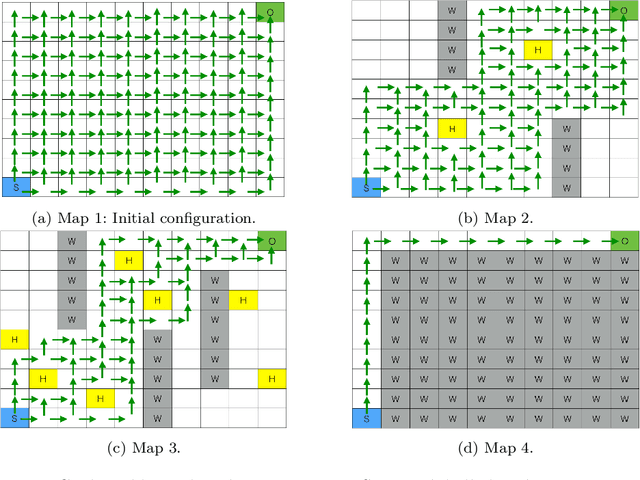
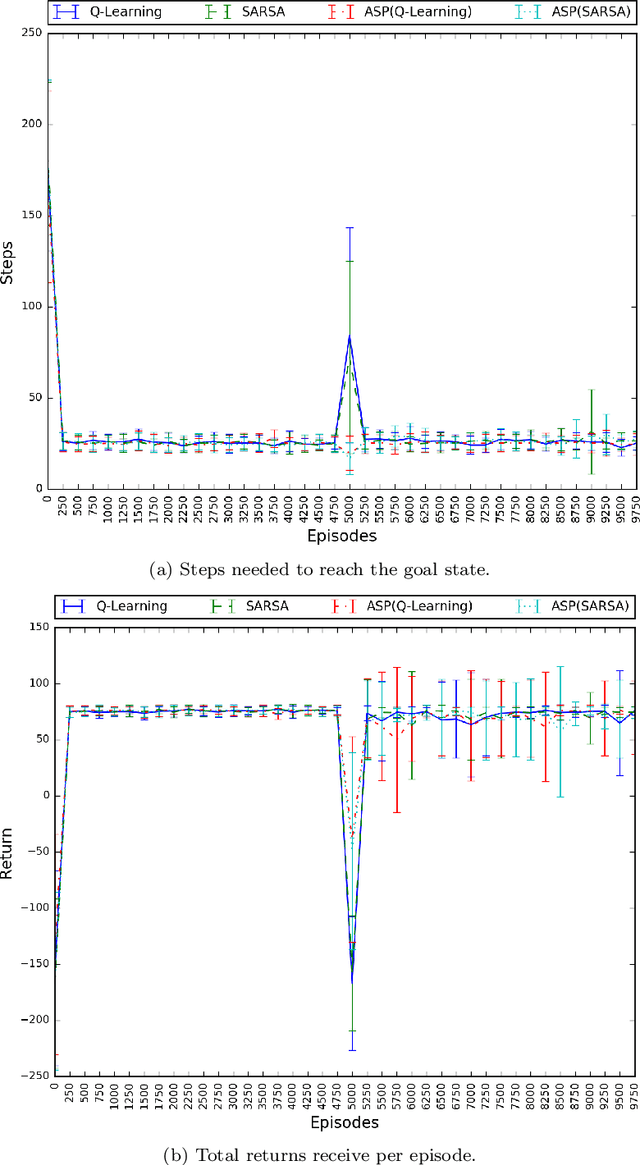
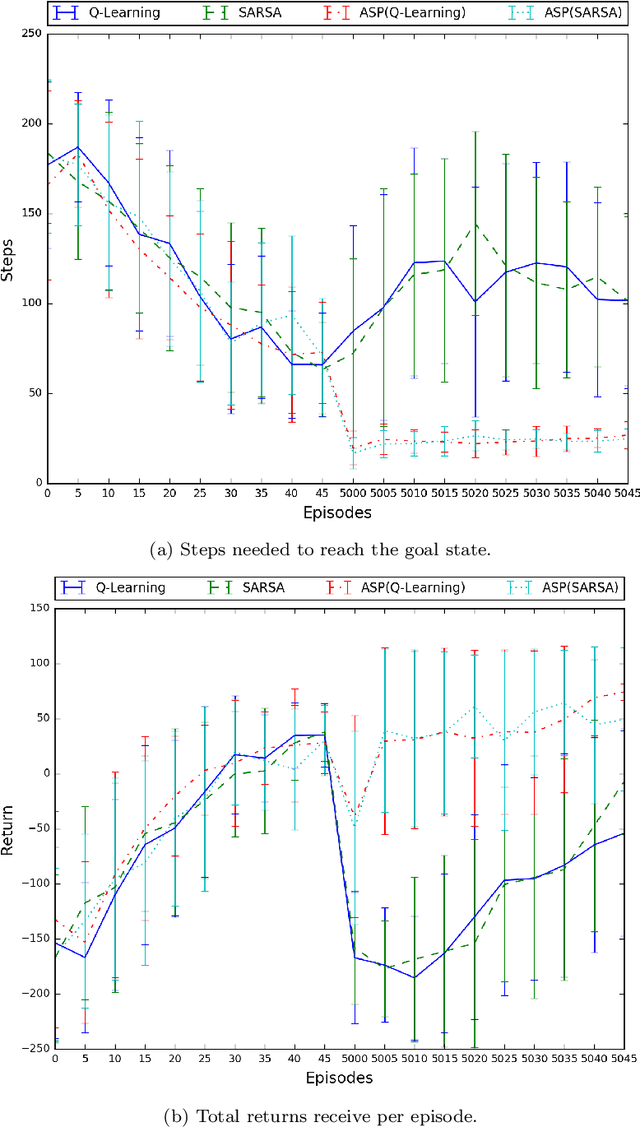
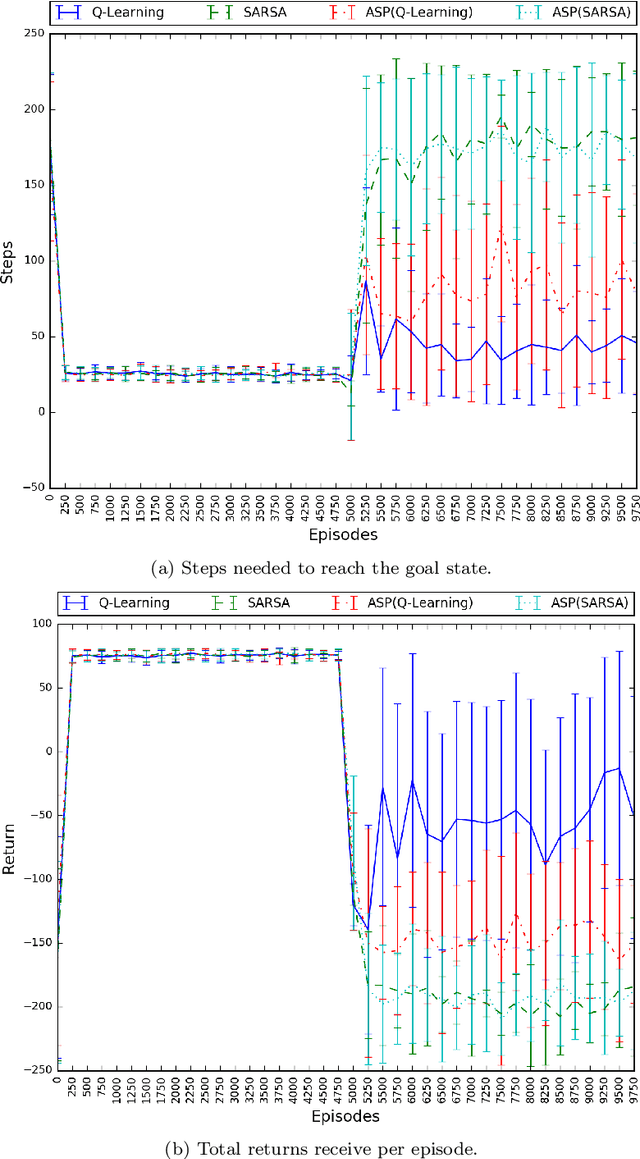
Abstract:Non-stationary domains, where unforeseen changes happen, present a challenge for agents to find an optimal policy for a sequential decision making problem. This work investigates a solution to this problem that combines Markov Decision Processes (MDP) and Reinforcement Learning (RL) with Answer Set Programming (ASP) in a method we call ASP(RL). In this method, Answer Set Programming is used to find the possible trajectories of an MDP, from where Reinforcement Learning is applied to learn the optimal policy of the problem. Results show that ASP(RL) is capable of efficiently finding the optimal solution of an MDP representing non-stationary domains.
Dispute Resolution Using Argumentation-Based Mediation
Sep 15, 2014Abstract:Mediation is a process, in which both parties agree to resolve their dispute by negotiating over alternative solutions presented by a mediator. In order to construct such solutions, mediation brings more information and knowledge, and, if possible, resources to the negotiation table. The contribution of this paper is the automated mediation machinery which does that. It presents an argumentation-based mediation approach that extends the logic-based approach to argumentation-based negotiation involving BDI agents. The paper describes the mediation algorithm. For comparison it illustrates the method with a case study used in an earlier work. It demonstrates how the computational mediator can deal with realistic situations in which the negotiating agents would otherwise fail due to lack of knowledge and/or resources.
A semantic network-based evolutionary algorithm for computational creativity
Jul 14, 2014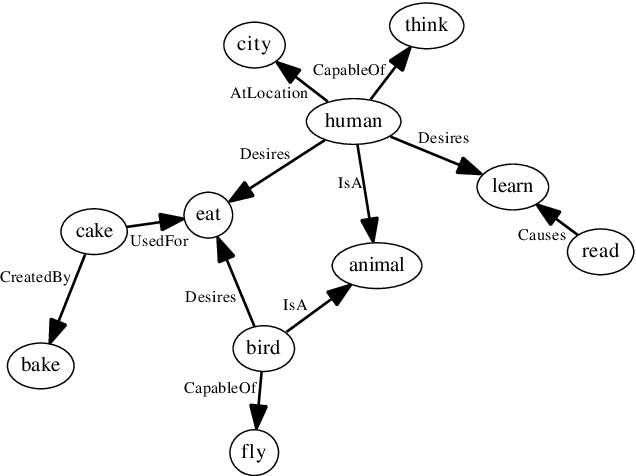

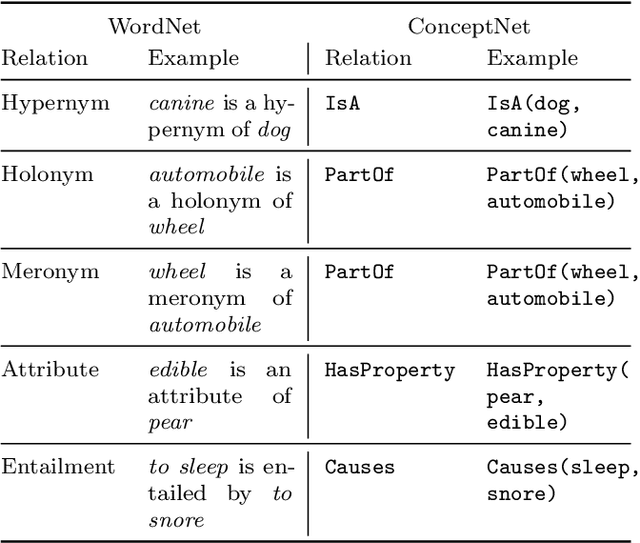

Abstract:We introduce a novel evolutionary algorithm (EA) with a semantic network-based representation. For enabling this, we establish new formulations of EA variation operators, crossover and mutation, that we adapt to work on semantic networks. The algorithm employs commonsense reasoning to ensure all operations preserve the meaningfulness of the networks, using ConceptNet and WordNet knowledge bases. The algorithm can be interpreted as a novel memetic algorithm (MA), given that (1) individuals represent pieces of information that undergo evolution, as in the original sense of memetics as it was introduced by Dawkins; and (2) this is different from existing MA, where the word "memetic" has been used as a synonym for local refinement after global optimization. For evaluating the approach, we introduce an analogical similarity-based fitness measure that is computed through structure mapping. This setup enables the open-ended generation of networks analogous to a given base network.
* 20 pages, 14 figures, revision after reviews, changed title
Proceedings of the Tenth Conference on Uncertainty in Artificial Intelligence (1994)
Apr 13, 2013Abstract:This is the Proceedings of the Tenth Conference on Uncertainty in Artificial Intelligence, which was held in Seattle, WA, July 29-31, 1994
A Symbolic Approach to Reasoning with Linguistic Quantifiers
Mar 13, 2013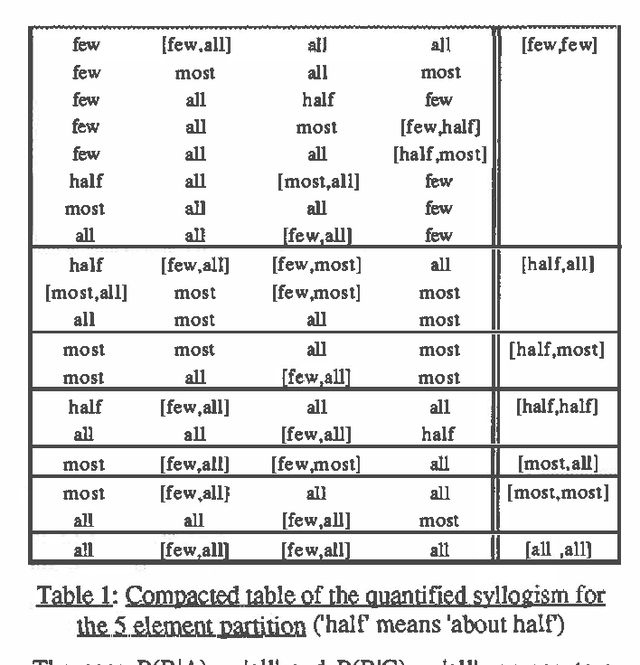
Abstract:This paper investigates the possibility of performing automated reasoning in probabilistic logic when probabilities are expressed by means of linguistic quantifiers. Each linguistic term is expressed as a prescribed interval of proportions. Then instead of propagating numbers, qualitative terms are propagated in accordance with the numerical interpretation of these terms. The quantified syllogism, modelling the chaining of probabilistic rules, is studied in this context. It is shown that a qualitative counterpart of this syllogism makes sense, and is relatively independent of the threshold defining the linguistically meaningful intervals, provided that these threshold values remain in accordance with the intuition. The inference power is less than that of a full-fledged probabilistic con-quaint propagation device but better corresponds to what could be thought of as commonsense probabilistic reasoning.
Incremental Map Generation by Low Cost Robots Based on Possibility/Necessity Grids
Feb 06, 2013



Abstract:In this paper we present some results obtained with a troupe of low-cost robots designed to cooperatively explore and adquire the map of unknown structured orthogonal environments. In order to improve the covering of the explored zone, the robots show different behaviours and cooperate by transferring each other the perceived environment when they meet. The returning robots deliver to a host computer their partial maps and the host incrementally generates the map of the environment by means of apossibility/ necessity grid.
Automated Generation of Cross-Domain Analogies via Evolutionary Computation
Apr 11, 2012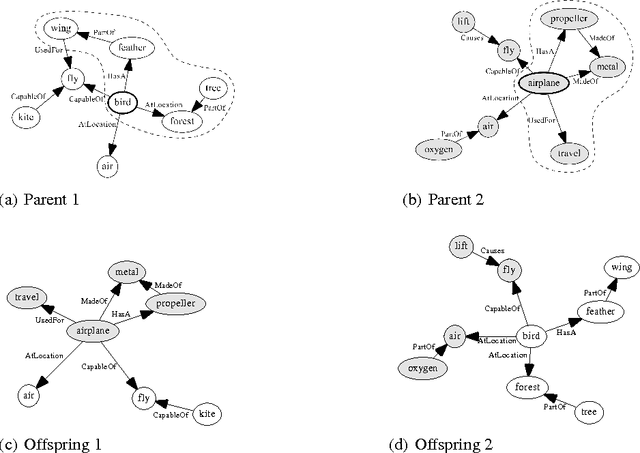
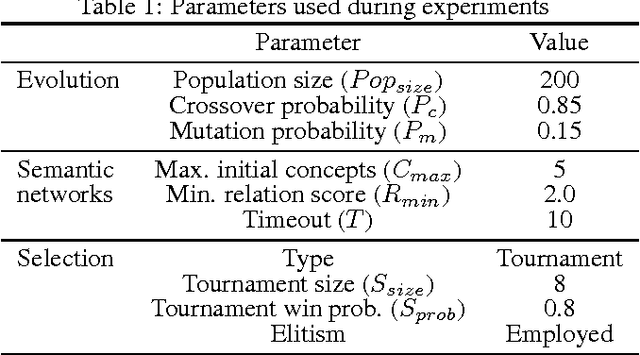

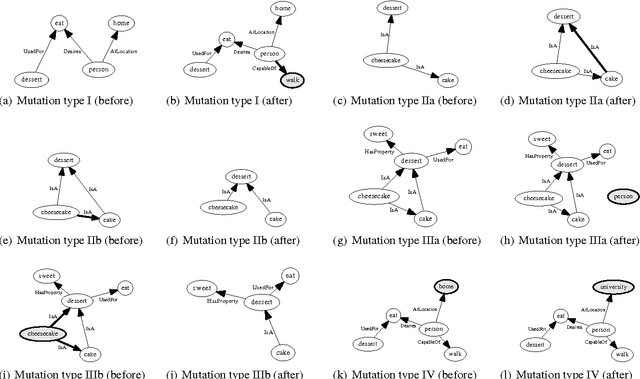
Abstract:Analogy plays an important role in creativity, and is extensively used in science as well as art. In this paper we introduce a technique for the automated generation of cross-domain analogies based on a novel evolutionary algorithm (EA). Unlike existing work in computational analogy-making restricted to creating analogies between two given cases, our approach, for a given case, is capable of creating an analogy along with the novel analogous case itself. Our algorithm is based on the concept of "memes", which are units of culture, or knowledge, undergoing variation and selection under a fitness measure, and represents evolving pieces of knowledge as semantic networks. Using a fitness function based on Gentner's structure mapping theory of analogies, we demonstrate the feasibility of spontaneously generating semantic networks that are analogous to a given base network.
* Conference submission, International Conference on Computational Creativity 2012 (8 pages, 6 figures)
Evolution of Ideas: A Novel Memetic Algorithm Based on Semantic Networks
Jan 17, 2012



Abstract:This paper presents a new type of evolutionary algorithm (EA) based on the concept of "meme", where the individuals forming the population are represented by semantic networks and the fitness measure is defined as a function of the represented knowledge. Our work can be classified as a novel memetic algorithm (MA), given that (1) it is the units of culture, or information, that are undergoing variation, transmission, and selection, very close to the original sense of memetics as it was introduced by Dawkins; and (2) this is different from existing MA, where the idea of memetics has been utilized as a means of local refinement by individual learning after classical global sampling of EA. The individual pieces of information are represented as simple semantic networks that are directed graphs of concepts and binary relations, going through variation by memetic versions of operators such as crossover and mutation, which utilize knowledge from commonsense knowledge bases. In evaluating this introductory work, as an interesting fitness measure, we focus on using the structure mapping theory of analogical reasoning from psychology to evolve pieces of information that are analogous to a given base information. Considering other possible fitness measures, the proposed representation and algorithm can serve as a computational tool for modeling memetic theories of knowledge, such as evolutionary epistemology and cultural selection theory.
* Conference submission, 2012 IEEE Congress on Evolutionary Computation (8 pages, 7 figures)
CBR with Commonsense Reasoning and Structure Mapping: An Application to Mediation
Oct 12, 2011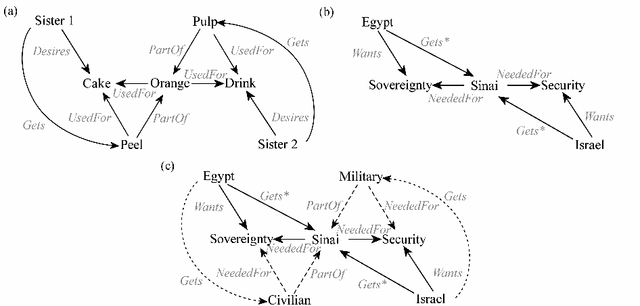
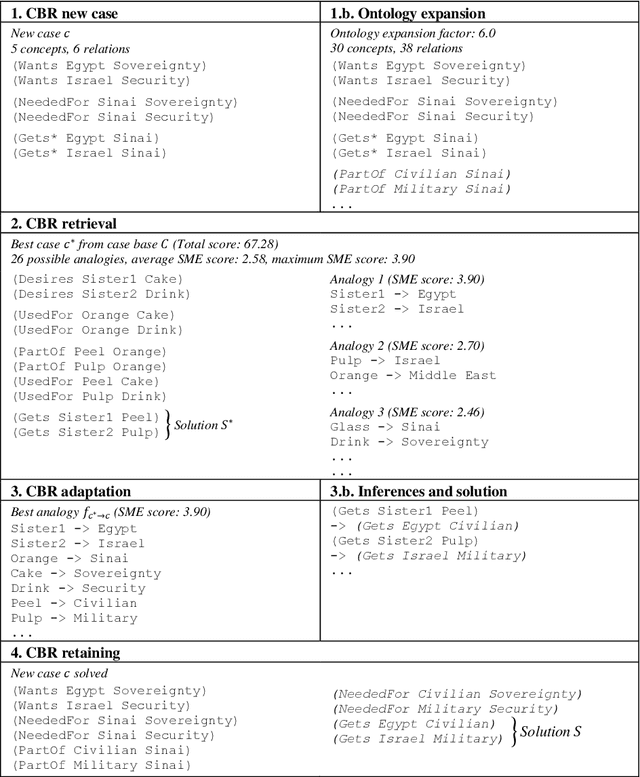
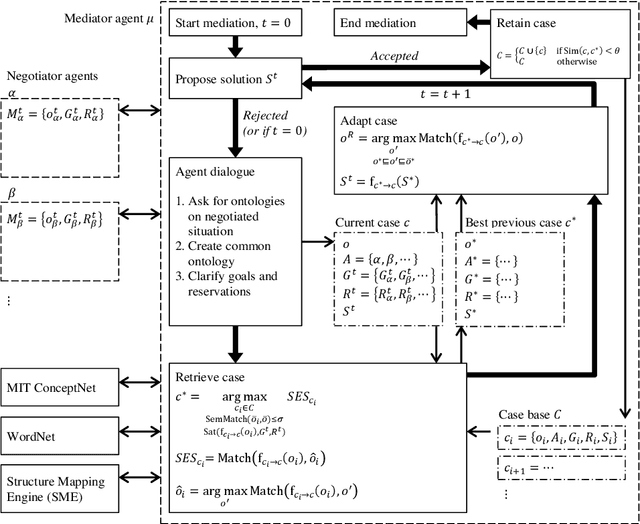
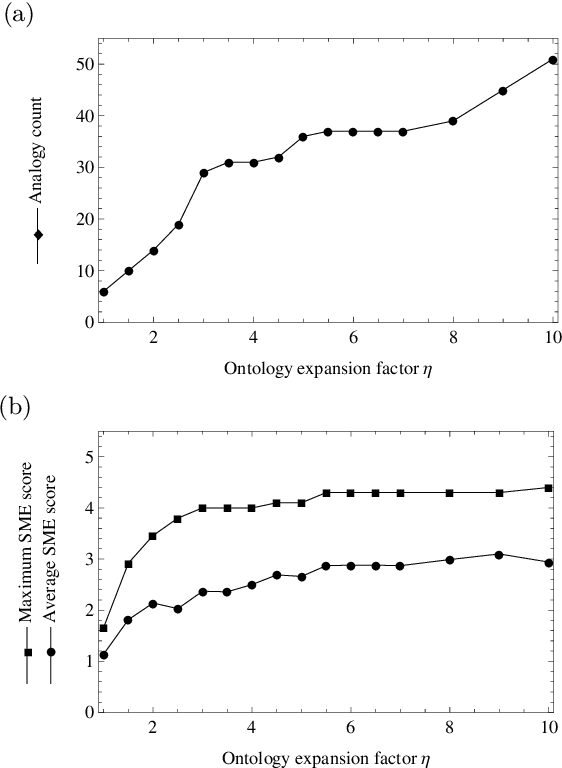
Abstract:Mediation is an important method in dispute resolution. We implement a case based reasoning approach to mediation integrating analogical and commonsense reasoning components that allow an artificial mediation agent to satisfy requirements expected from a human mediator, in particular: utilizing experience with cases in different domains; and structurally transforming the set of issues for a better solution. We utilize a case structure based on ontologies reflecting the perceptions of the parties in dispute. The analogical reasoning component, employing the Structure Mapping Theory from psychology, provides a flexibility to respond innovatively in unusual circumstances, in contrast with conventional approaches confined into specialized problem domains. We aim to build a mediation case base incorporating real world instances ranging from interpersonal or intergroup disputes to international conflicts.
* 15 pages, 3 figures; updated copyright notice
 Add to Chrome
Add to Chrome Add to Firefox
Add to Firefox Add to Edge
Add to Edge